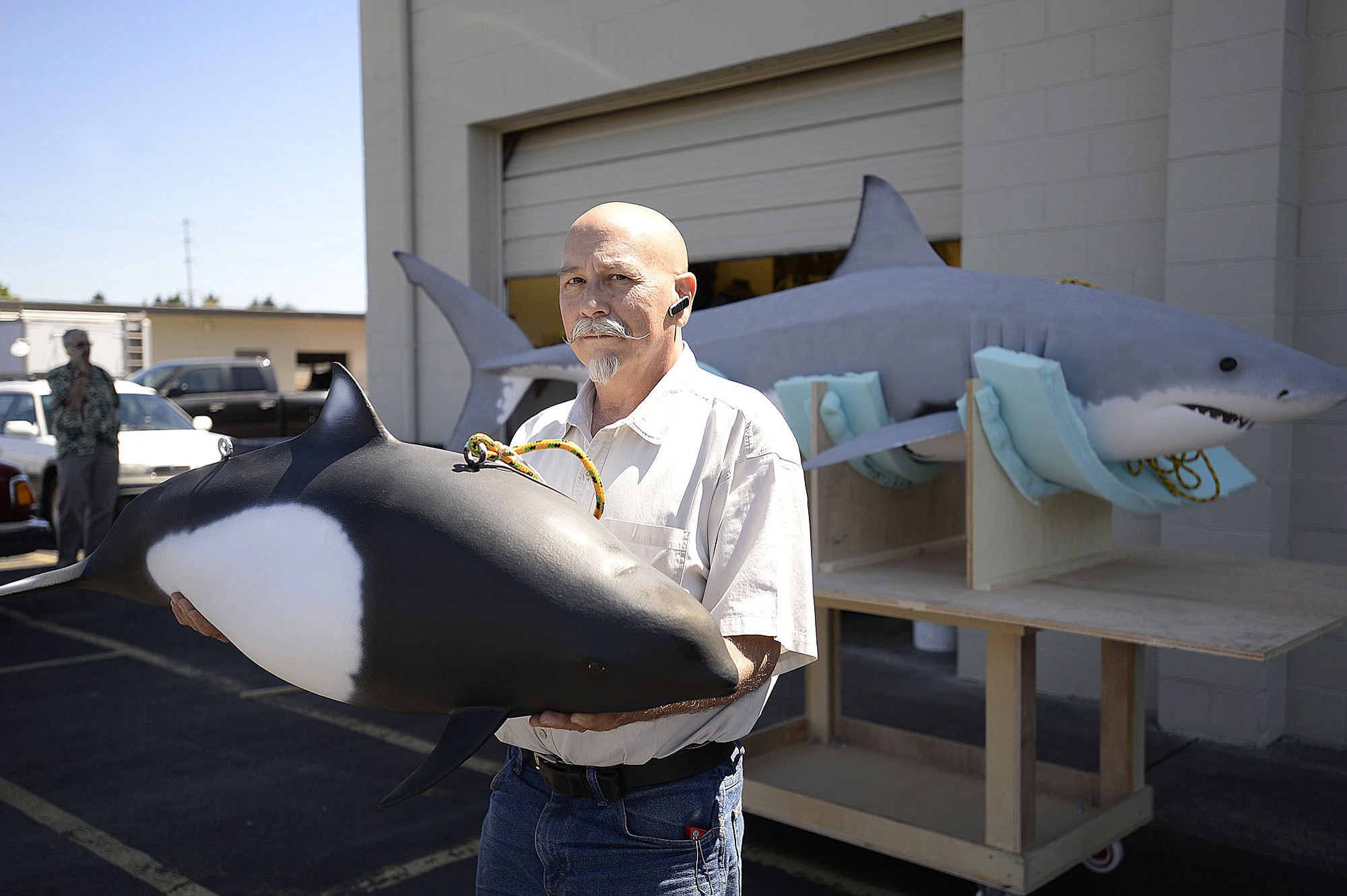It’s tough not to notice the teeth.
They’re what make a shark such an effective eating machine.
Created in Hazel Dell, those serrated jaws figure to draw a lot of attention when the shark welcomes people to a National Park Service attraction in California.
The 10-foot model of a white shark was built by Show Time Exhibitions for a visitors center at Point Reyes National Seashore, about 30 miles north of San Francisco.
The shark model was carved from foam, using computer-controlled machining, said Show Time CEO John Geigle.
Show Time also created models of several other Pacific Coast animals for the Point Reyes display. They include a Dall’s porpoise, a seabird known as a sooty shearwater and a community of creatures living on and around a submerged rock.
There’s also a 4-foot sea lion, which likely will fill a particular role in the display: prey.
“The shark will be going after the sea lion,” said Jim Engelhardt, Show Time’s director of operations.
There is more to the hunter than teeth, however, which has made the shark such an interesting project.
“I’ve learned more about them,” Geigle said.
If you look just above those teeth, you can see a cluster of small pores between the eye and the tip of the snout. They help make the shark such a great predator. The pores are part of a receptor system that can sense weak electrical fields generated by living creatures.
There also is a sensory organ along each side of the shark, a lateral line that has been reproduced in the model, Geigle said.
The display was installed Thursday — the shark is suspended from the ceiling — in the Lighthouse Visitors Center. That location on the Point Reyes Headlands is one of the spots in the 100-square-mile park where visitors are most likely to see white sharks.
Show Time’s exhibit includes some spare parts, by the way. The model that illustrates that community of rock-dwelling organisms — including sea anemones and barnacles — will be in an exhibit that visitors can touch. The model-makers have planned for some breakage.
“We have a box of replacements,” Geigle said.
Show Time is the second model-making business in that location for Geigle, who previously owned Masterpiece Models. Display-quality items that came out of that fabrication shop included a couple of items for the Museum of Flight in Seattle: a half-size model of the Hubble Space Telescope and a replica of a NASA space shuttle toilet.




